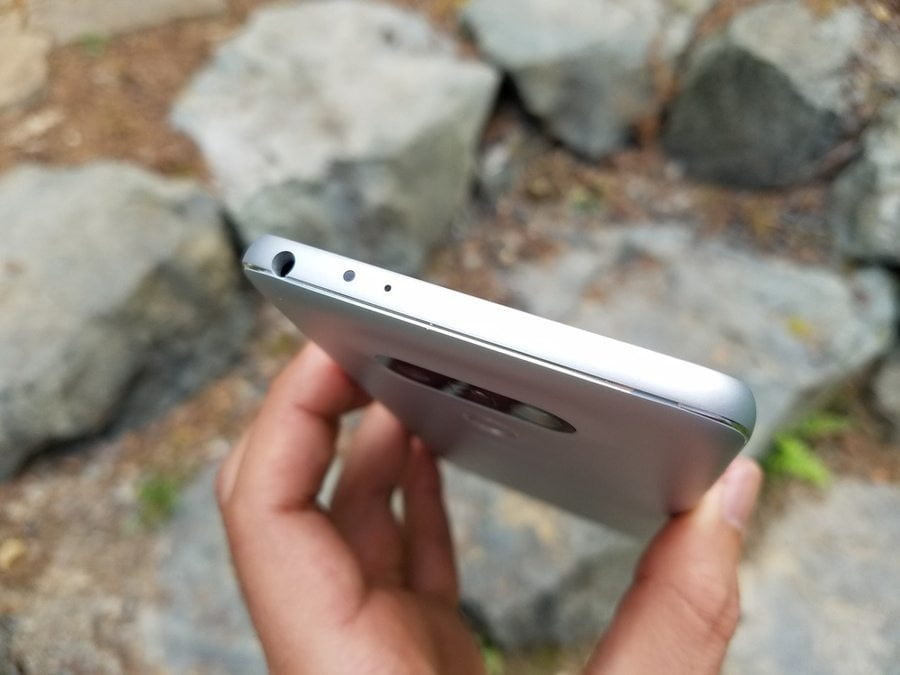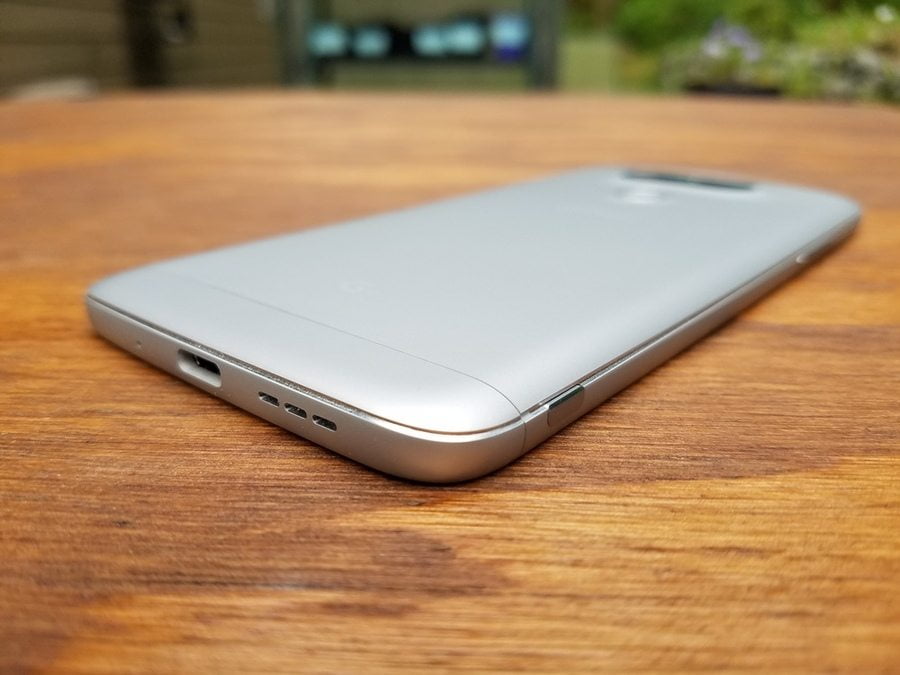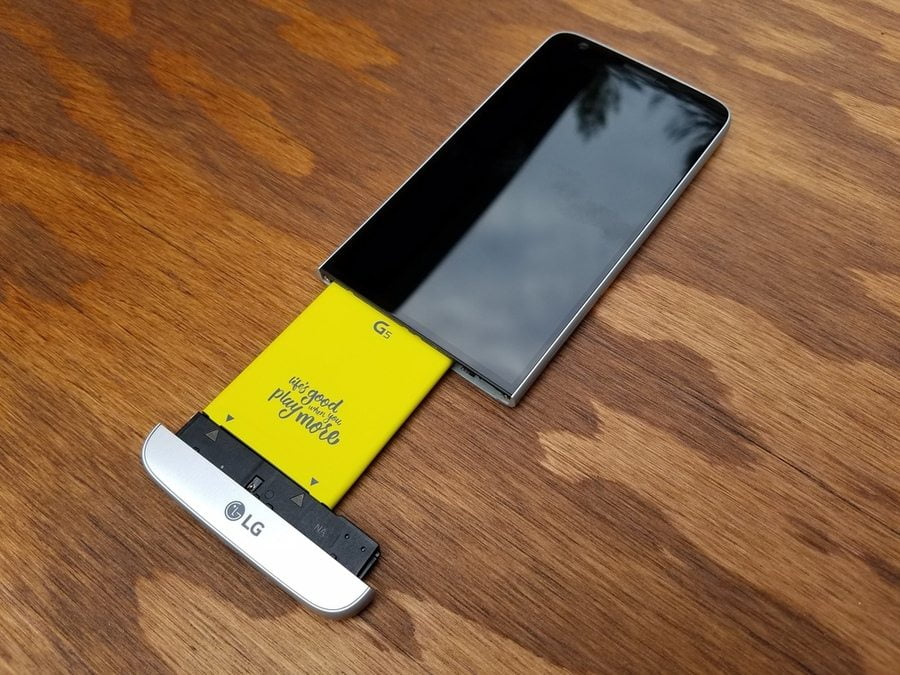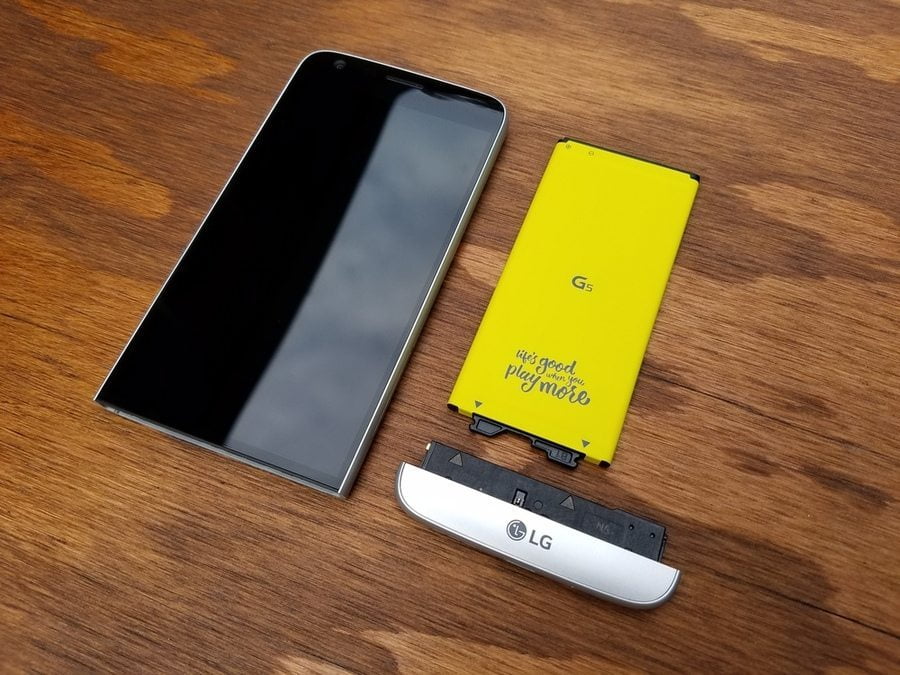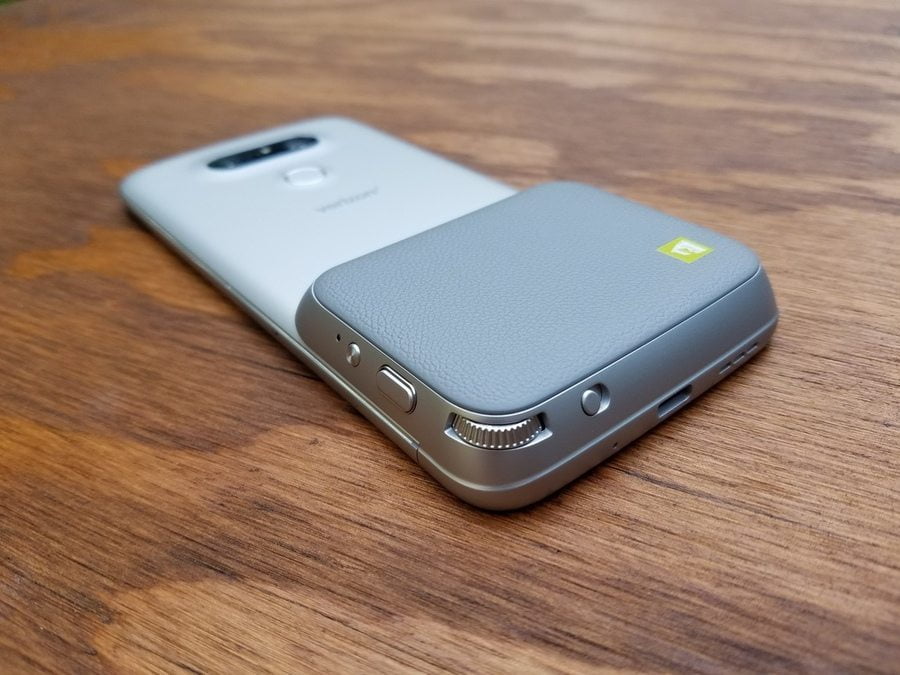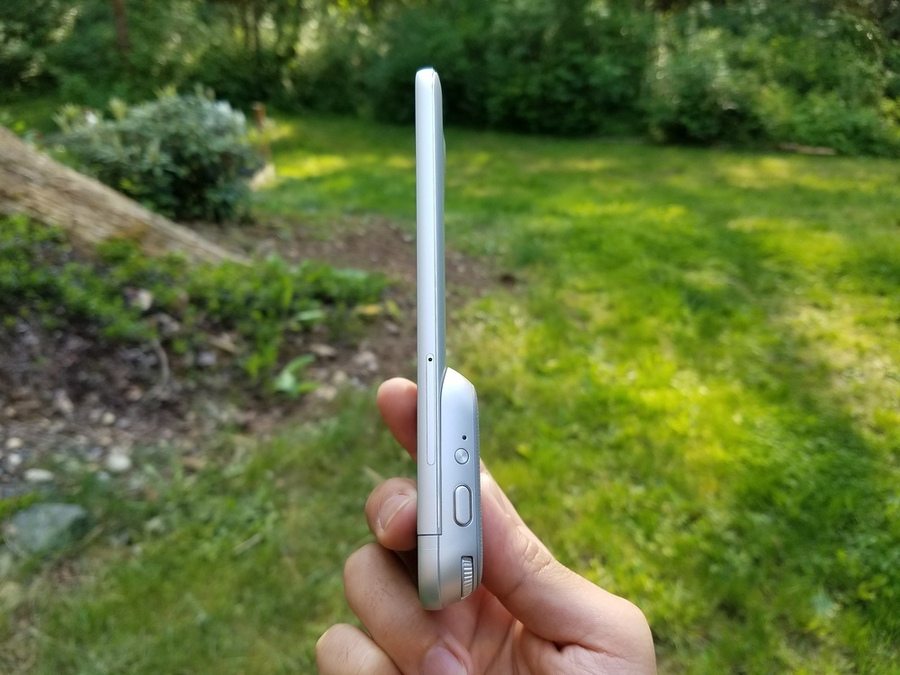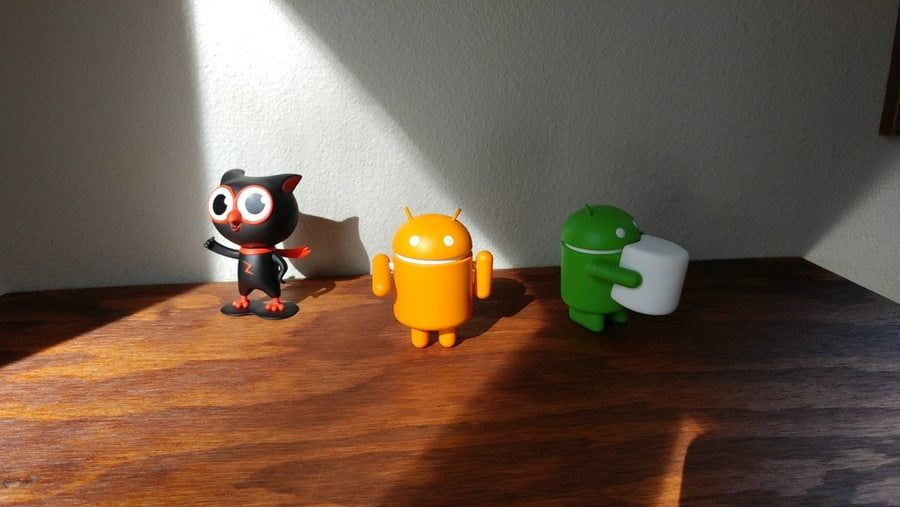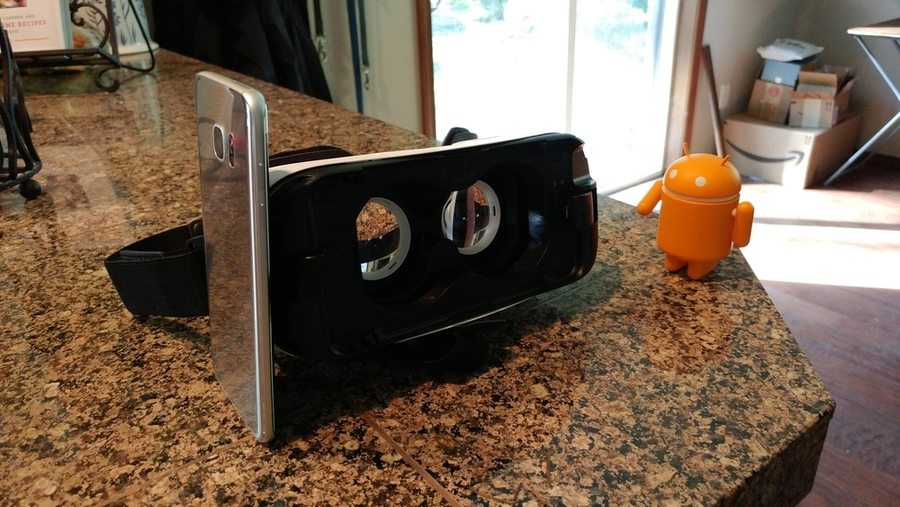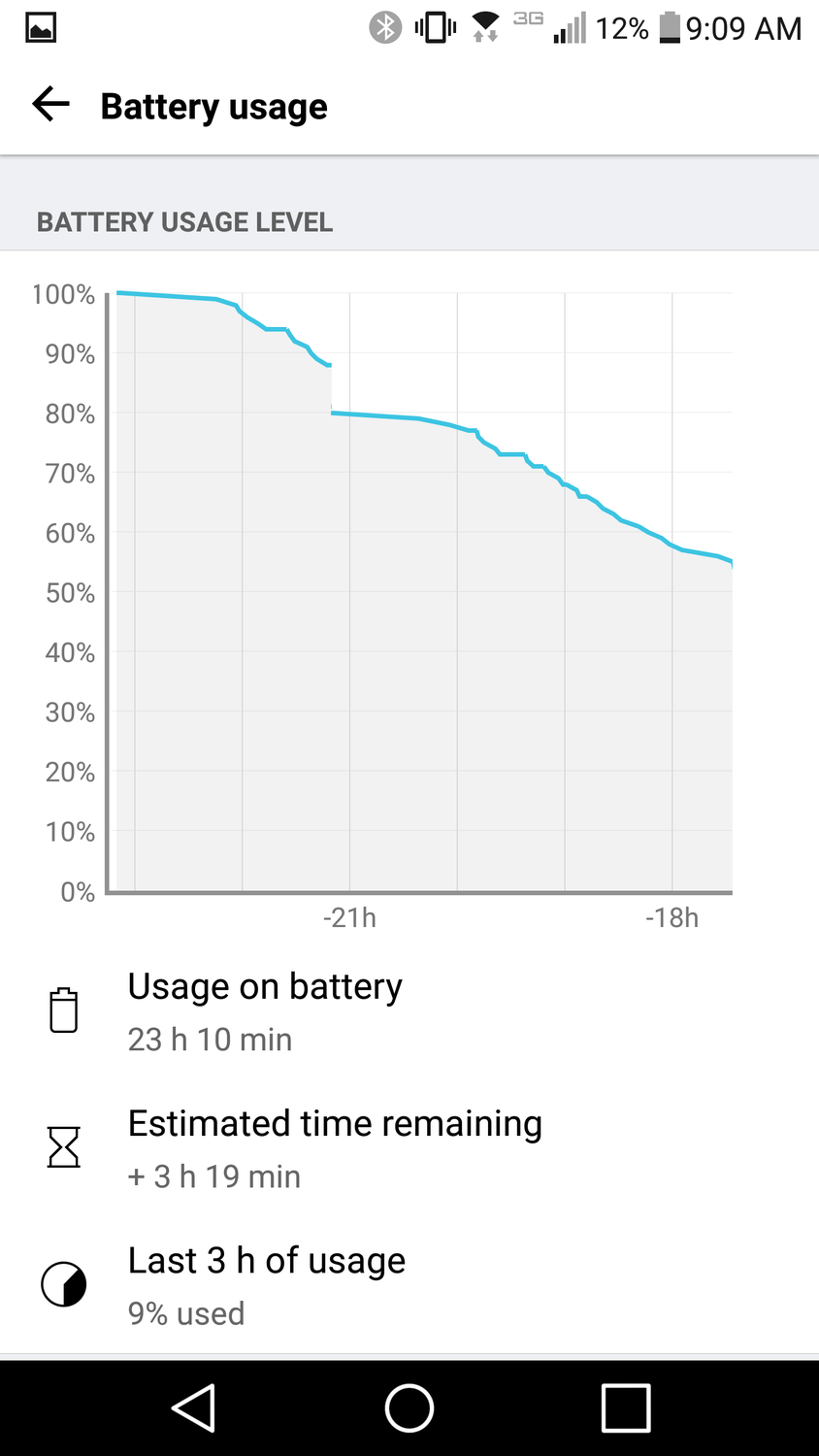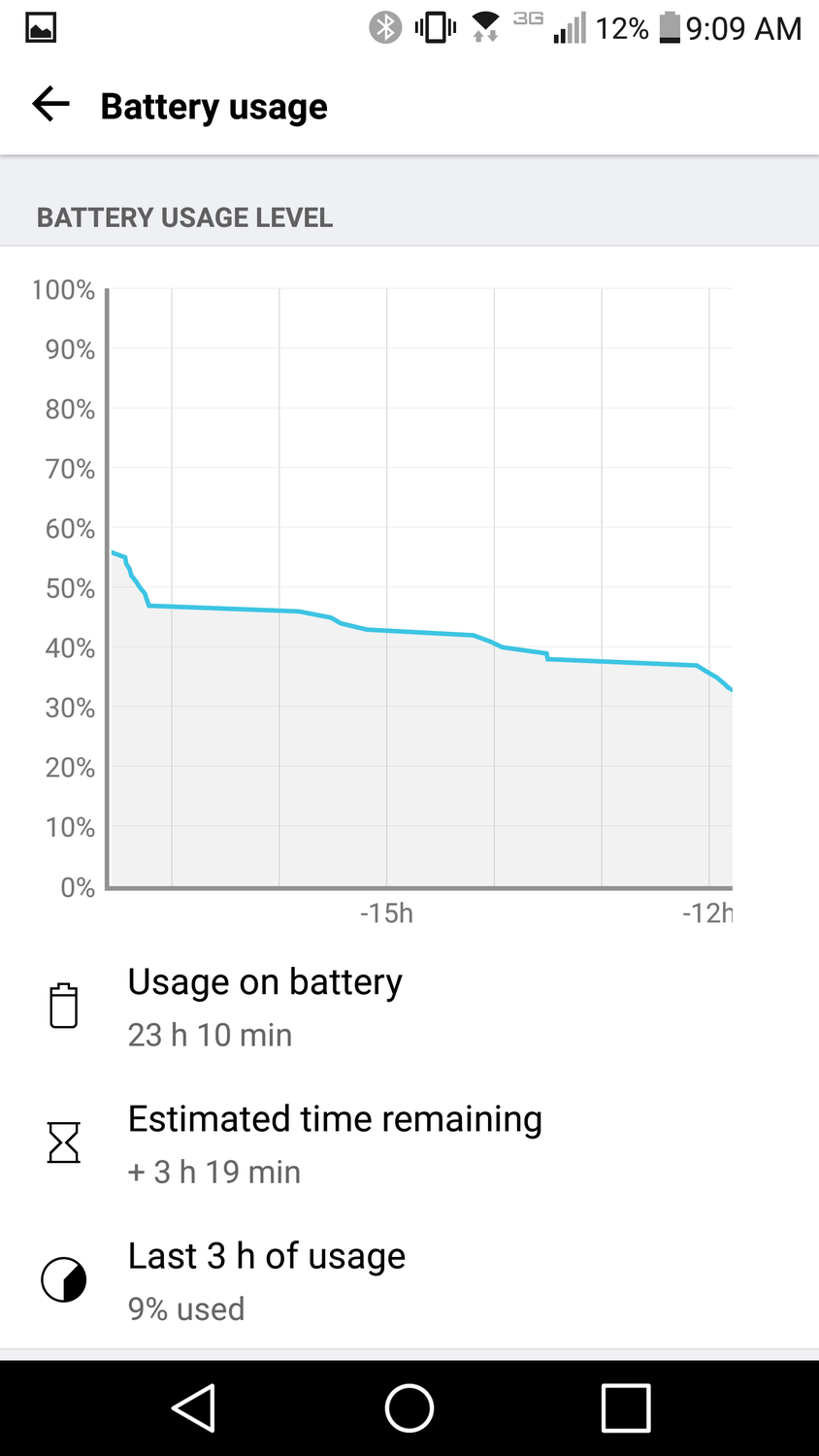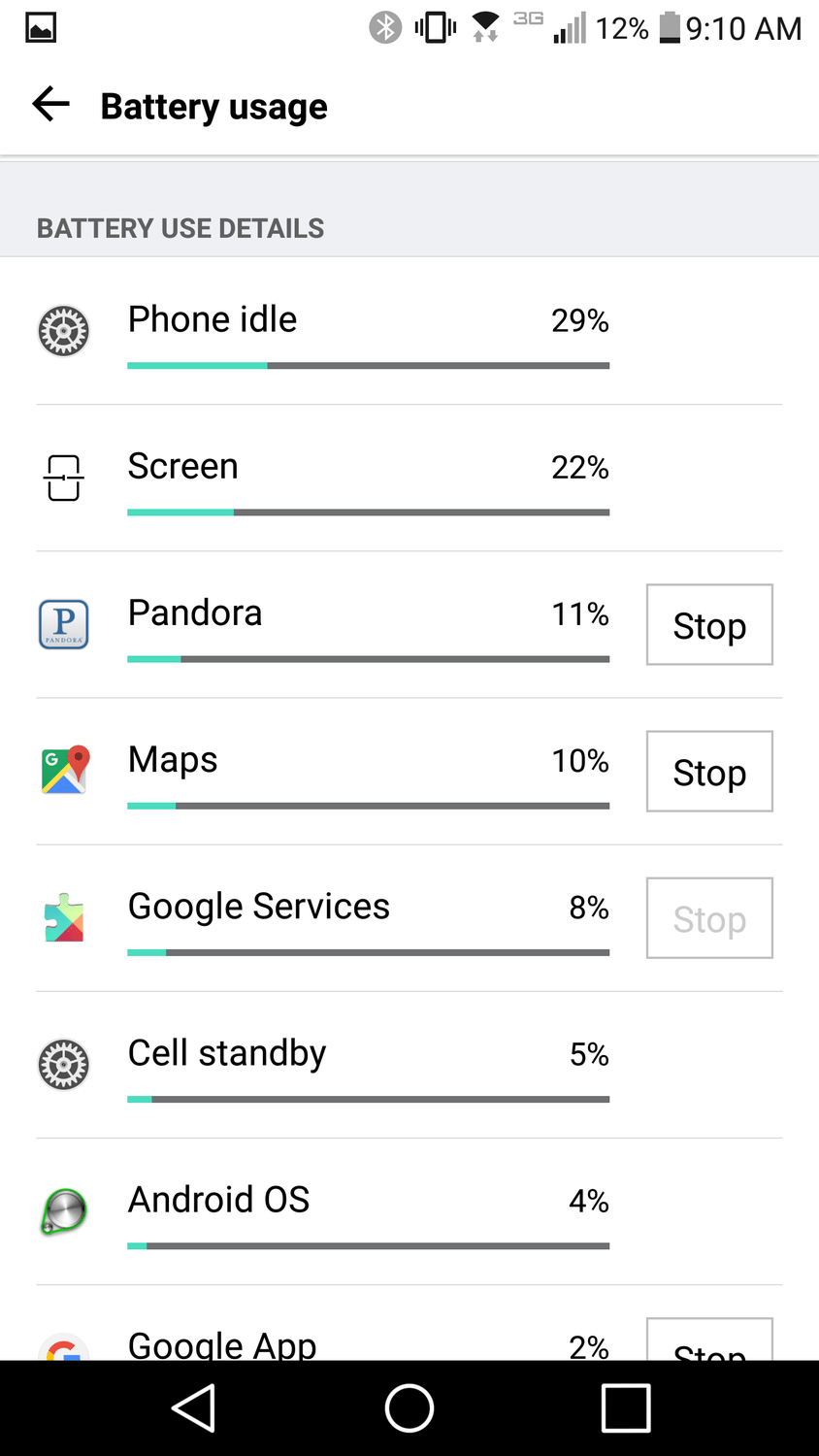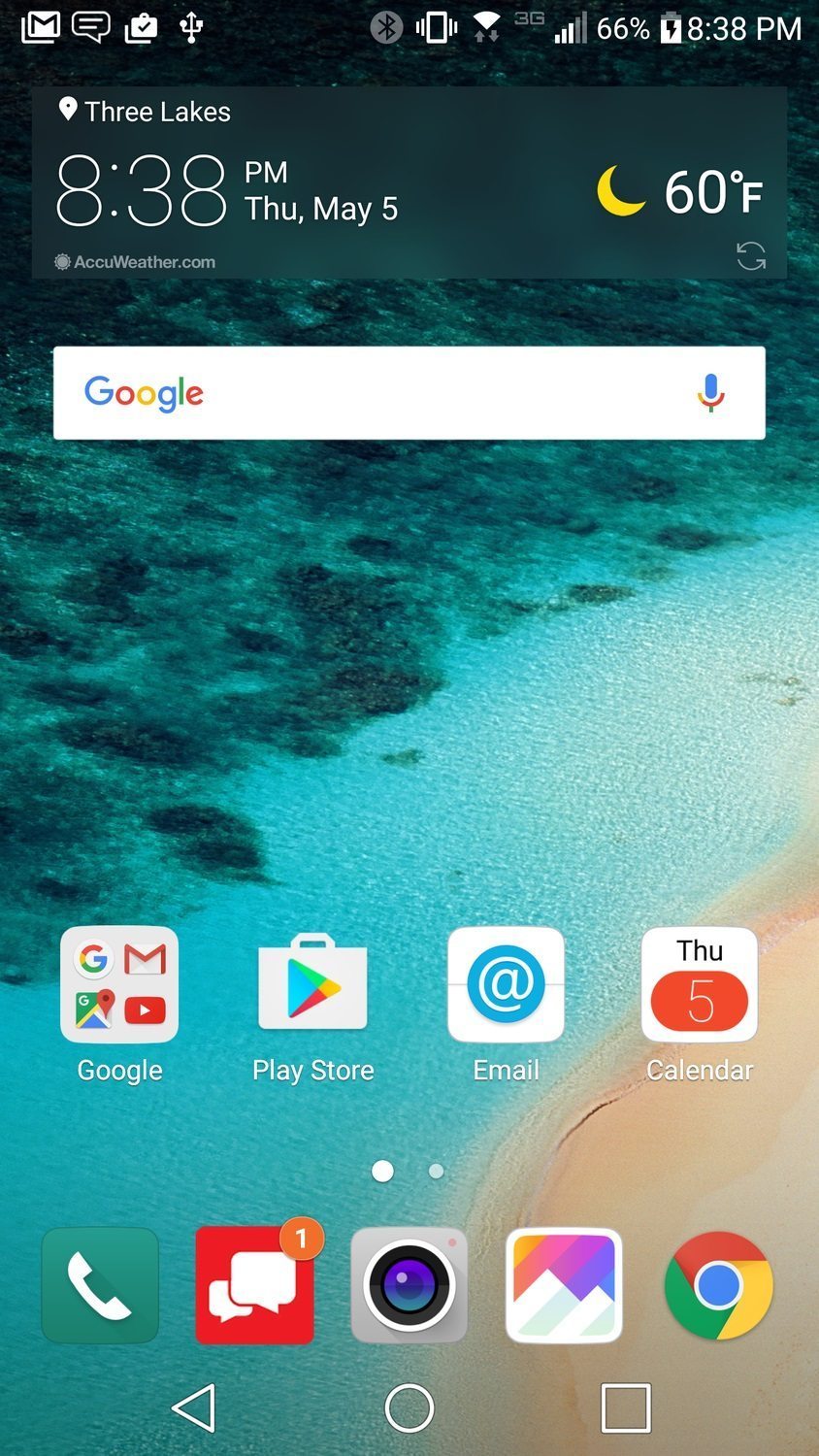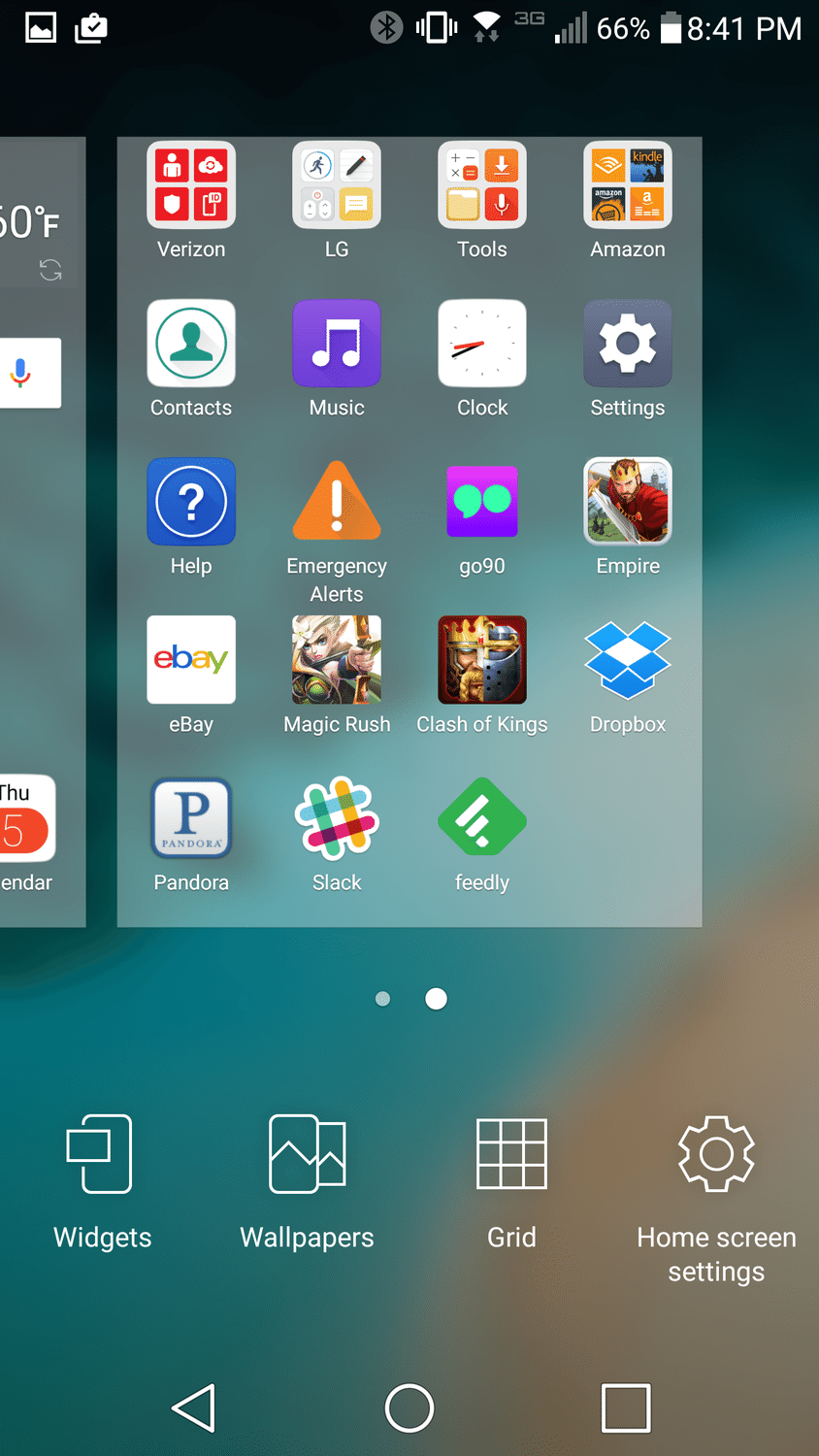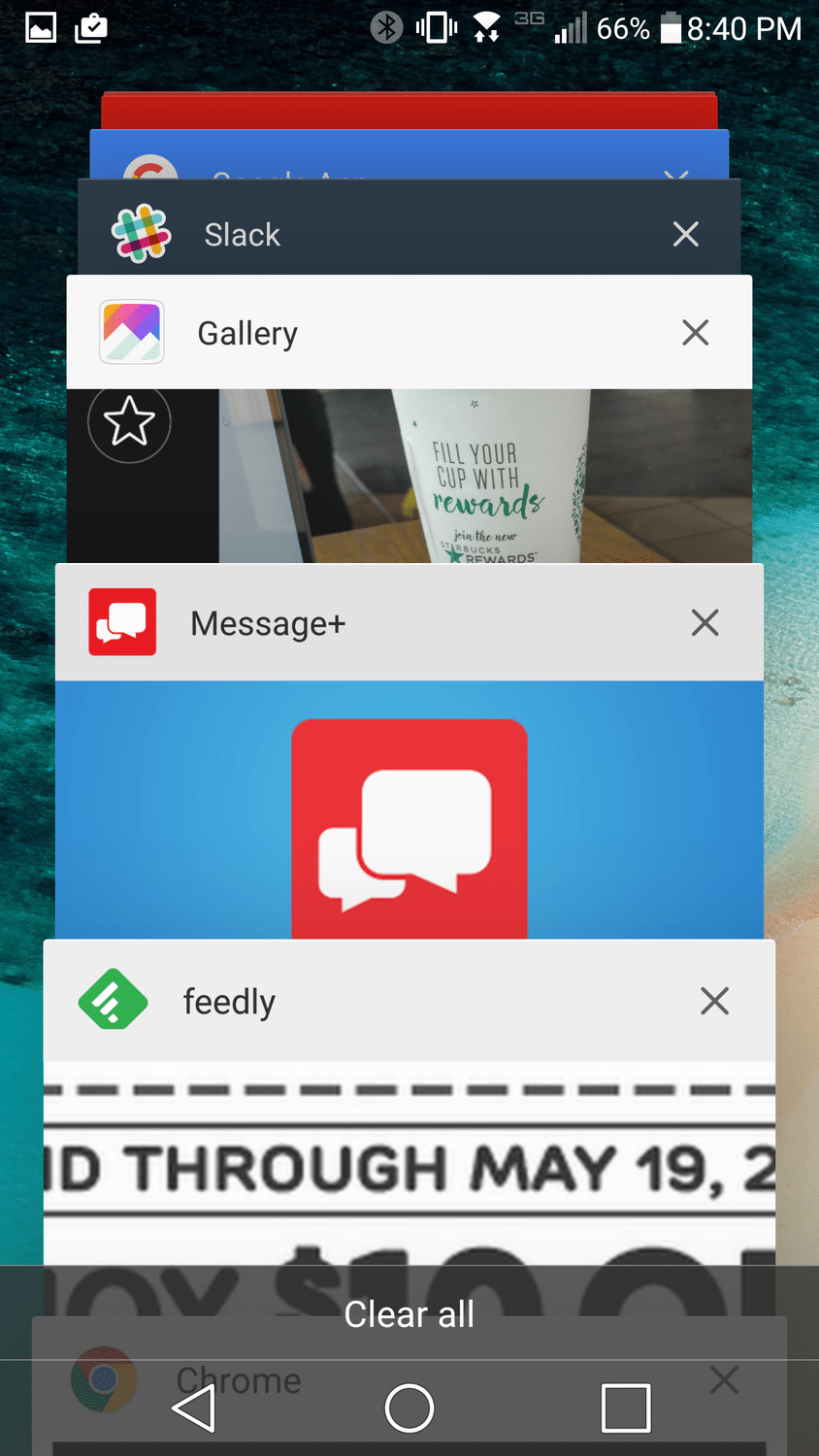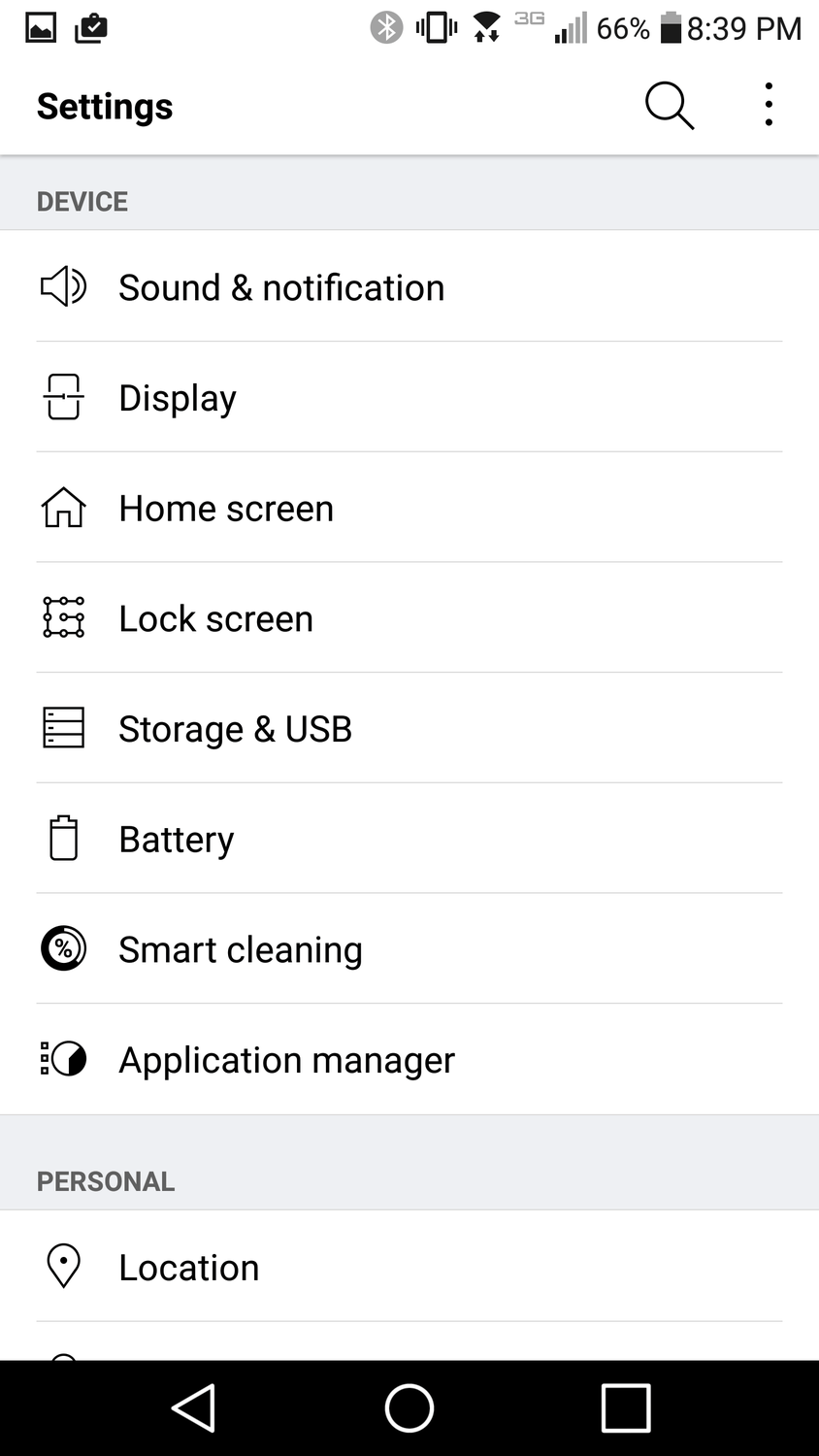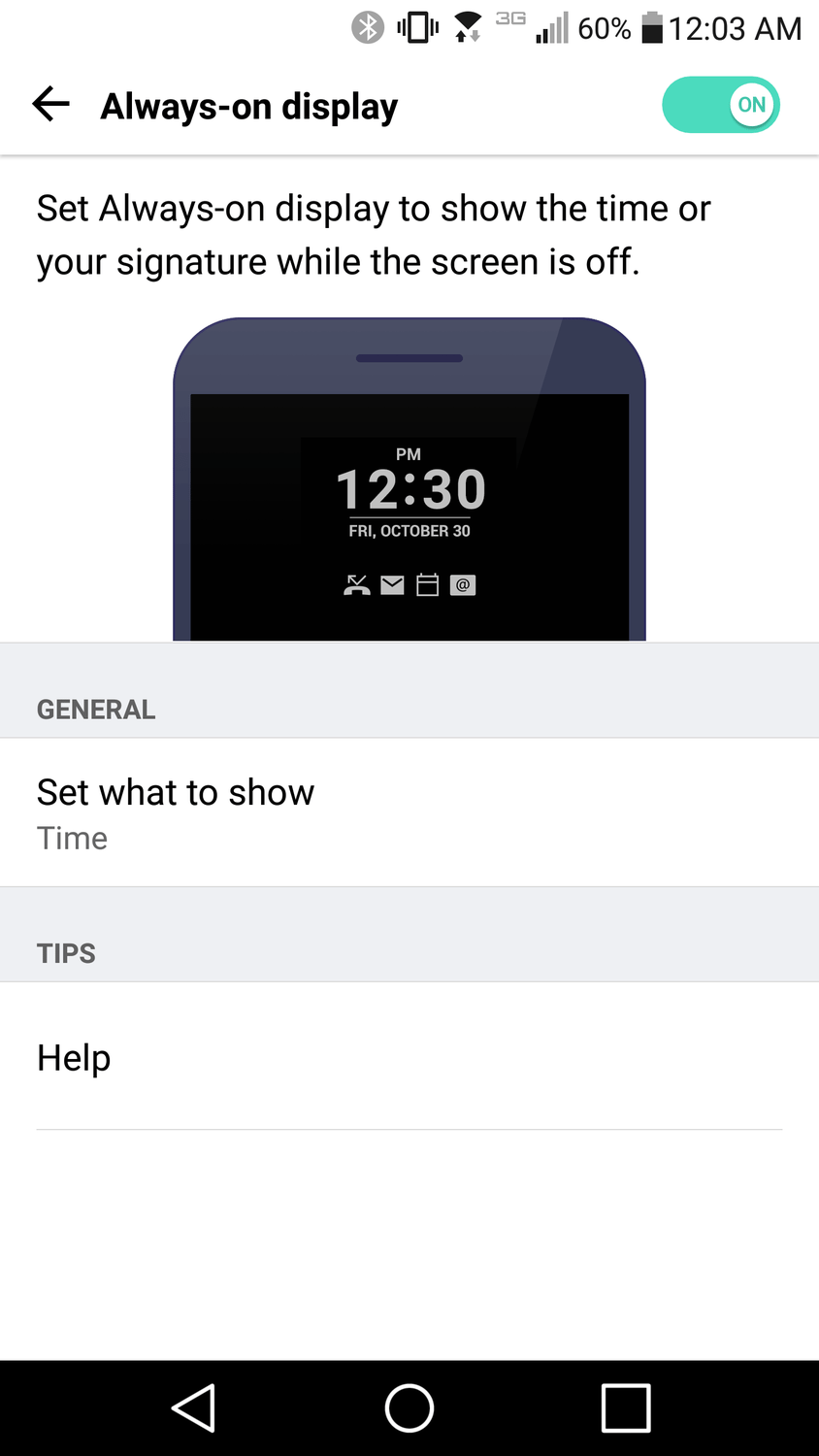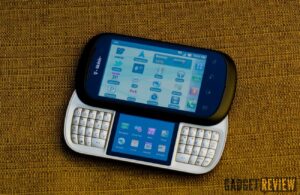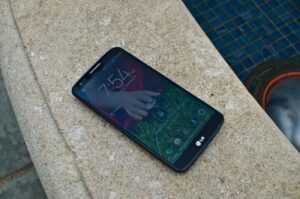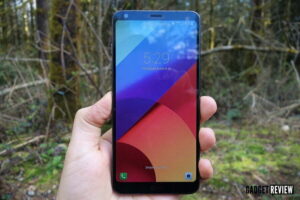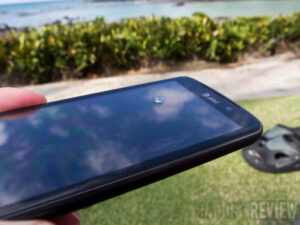The smartphone market was somewhat taken aback by LG’s new flagship this year, the LG G5, which is quite a departure from what we’ve known the series to be. That’s not always a bad thing; change can be good. But with it often comes the question: Is this the right direction? And that’s certainly the case with the G5.
An all-metal build is new territory for the Korean manufacturer. Despite that, and for better or worse, LG refuses to let go of the removable battery ability. Yes, this is the only metal-built smartphone that allows the user to swap batteries and go from 0 to 100% in a couple seconds, via a clever eject-able slot design. Let’s see in our LG G5 Review if this new approach hits the nail on the head, or if LG should take it back to the drawing board.
Overview
Price: $624 on Verizon
Available: Now
Model: G5
WHY IT’S A TOP PICK: Unique metal design with eject-able battery and wide-angle camera.
What We Liked:
- LG’s persistance to maintain a swappable battery despite the move to premium
- User has camera flexibility between a standard or wide-angle lenses
- Slot design opens doors to neat accessory add-ons
What We Didn’t:
- A 0.2″ smaller display in almost the same phone form-factor as the G4
- Although metal-built, the surface doesn’t feel as premium as it should.
- LG user interface (UI) is fast, but has questionable changes (i.e. removal of the app drawer)
LG G5 Specs
| Display | 5.3″ IPS LCD, QHD (2560×1440 pixels) |
| Chipset | Qualcomm Snapdragon 820 (quad-core, 2.15 GHz) |
| Memory | 4GB of RAM |
| Storage | 32GB internal and up to 200GB microSD expansion |
| Rear Camera | 16MP (f/1.8) and 8MP (f/2.4, wide angle), OIS, laser AF |
| Front Camera | 8MP, f/2.0 |
| Battery | 2,800 mAh (removable) |
| Software | Android 6.0.1 with UX 5.0 user interface |
| Colors | Silver, Titan, Gold, Pink |
| Price | $624 |
| Buy Now |
Design
The LG G5’s design/build is nothing like its predecessor, whatsoever. This is definitely what we call an overhaul. The drive behind this change was the industry’s move to premium smartphone materials. LG has a spot as the cream of the crop, and it could no longer allow the competition appear to have the upper hand.
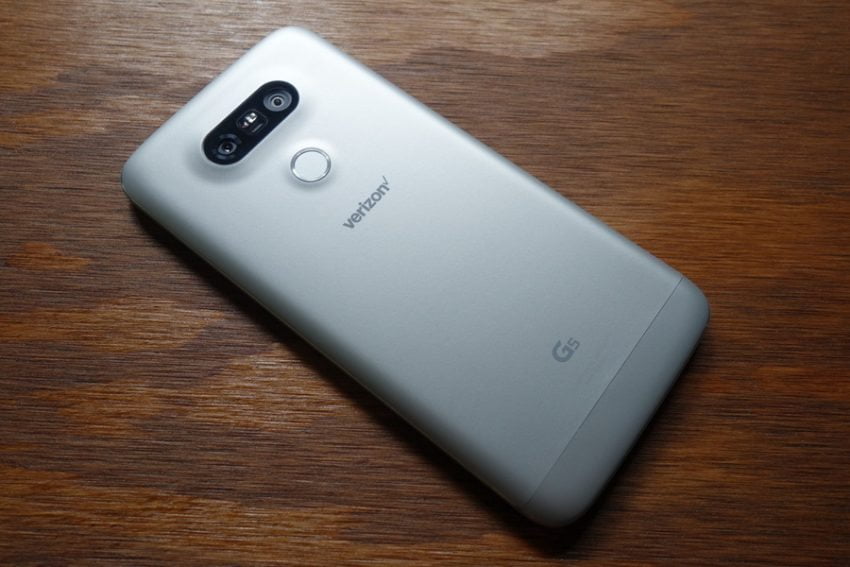
The G5’s uni-body metal design is pretty basic. The back cover looks like just a sheet of metal, with no interruption (aside from the camera modules and fingerprint scanner). Typically on metal builds, there are plastic antenna lines that cut through. Not so here. What LG has done instead is ran the antennas how they pleased, then covered it all with a uniform metallic paint primer finish (matte).
That approach makes for a nice, clean look, but it impugns on the premium feel. In my opinion, it doesn’t feel too far from plastic, which kind of defeats the purpose. However, it does feel sturdier and more rigid than last year’s G4.
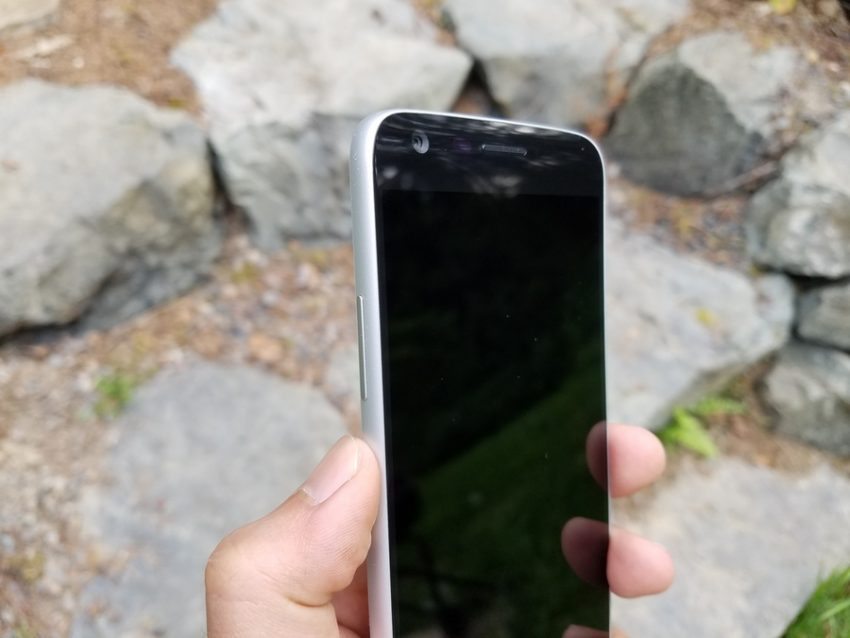
The sides are also tidy. They’re rounded and wrap around to the front glass very cleanly. I quite enjoyed the phone’s handling; your fingers wrap around the rounded sides for a nice grip. However, where the back cover and sides meet could’ve been machined a bit more smoothly. The edge is hard and a little sharp to the touch, but at least it gives off a sleek shine.
When you move your eyes towards the bottom of the phone, you’ll notice a peculiar seam. It’s not present because of design laziness, this is where the bottom can pull apart from the chassis. There’s a covert button on the left side of the phone, towards the bottom, that releases the module.
The core purpose behind this feature is to maintain battery swappability, but there’s more than meets the eye here. It opens the doors to add-ons that can expand the G5’s functionality. Our friends at Verizon were kind enough to send us one of these modules – the Cam Plus.
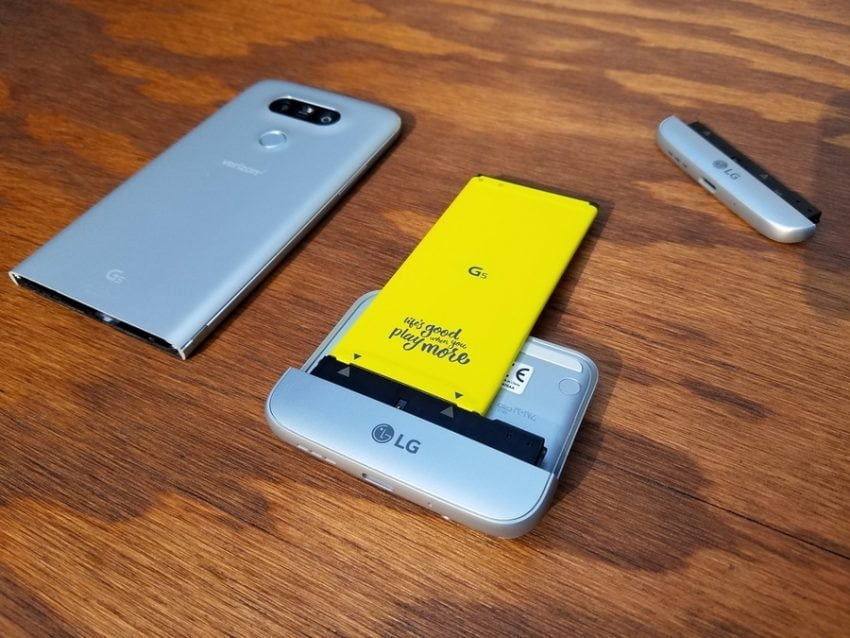
It works simply by swapping the battery into the module and sliding it back in the phone’s slot. In particular, the Cam Plus adds physical camera controls to the G5’s camera experience. It includes a zoom wheel and shutter button. What’s more, it has it’s own battery pack, that boosts the total battery capacity to 4,000 mAh (from the phone’s stock 2,800 mAh) battery. If you often use your phone for pics/videos, you’ll love this accessory.
On another module, LG partnered with Bang & Olufsen (high-end audio manufacturer) to make a HiFi 32-bit DAC (digital-to-analog converter) add-on, for higher quality tunes on headphones. But unfortunately, this one hasn’t made its way state-side yet.
Currently, these are the only two modules we know about, which poses the concern: How useful will this feature be? Of course, new concepts need to start somewhere, and LG has opened the design up to third-party manufacturers. We just don’t know how many will take them up on it, or when more modules will come out.
Performance
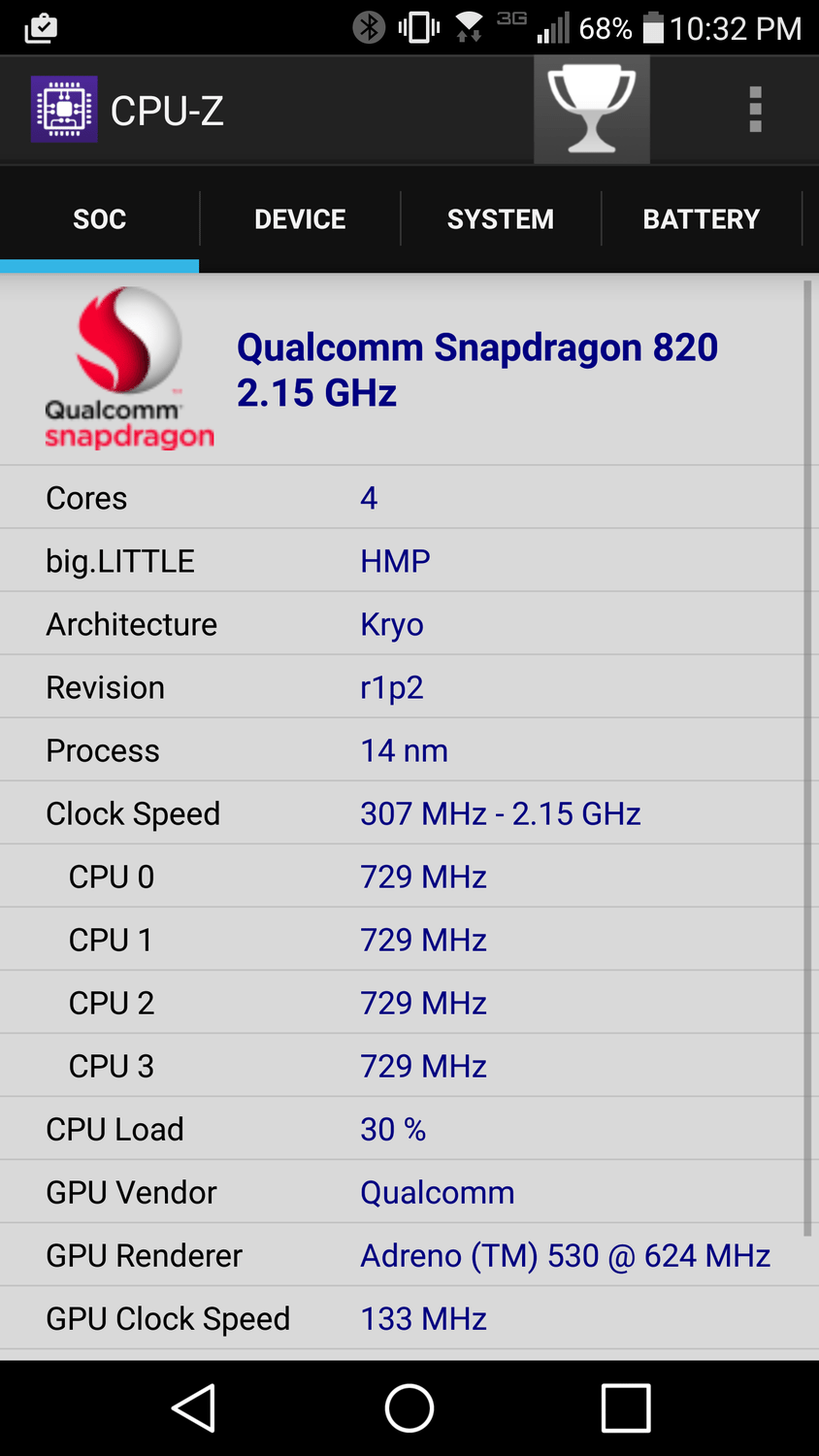
Like its flagship competitors, the G5 also packs Qualcomm’s latest and greatest chipset, the Snapdragon 820. It’s a sure bet that any phone powered by this beast will be blistering fast, and the G5 is no exception. The software’s response is super snappy across the board. You can multitask and push visuals all you want, the G5 plows through tasks and asks for more.
I’m not sure if it’s fast processing or software refinement (or both), but the software is much smoother than LG’s previous phones. It’s almost as fluid as stock Android, which deserves an applaud. Samsung newest flagships are also powered by Qualcomm’s latest, but they still bear the occasional stutter/hiccup.
Read: Best Smartphones 2016
The performance of the fingerprint scanner was also well done. It also serves as the power button, but you don’t need to press it before it scans. Just lay your finger on it and the phone will turn on and unlock. Alternatively, you can double tap to wake or sleep the phone.
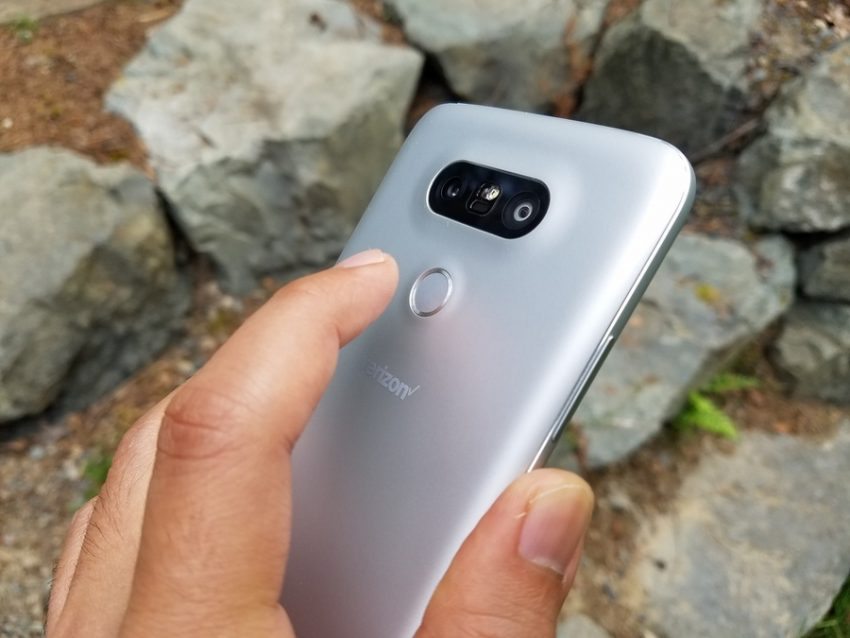
External audio is once again powered by a mono, bottom-firing speaker. It can keep up with any other smartphones that follow suit (Galaxy, iPhone, etc.), but can’t hold a candle to front-facing speakers. Also on the bottom, I’d like to point out that LG keeps up with the times and incorporates the latest USB Type-C standard. So you’re able to insert the connector any which way, and it also packs Quick Charge 3.0 (about 40% more efficient than QC 2.0). This one-ups the Galaxy S7 and the Galaxy S7 Edge, which still have microUSB and QC 2.0.
Display
Despite rumors of LG adopting AMOLED technology for the G5’s screen, we instead have an IPS LCD panel once again. But don’t fret, it’s a fine display. Colors are more vibrant than before and there’s great contrast. The G5 continues to use a QHD resolution, so images are still super sharp. But some folks may be bothered that LG dropped the screen size from 5.5″ in the last two flagships to 5.3″.
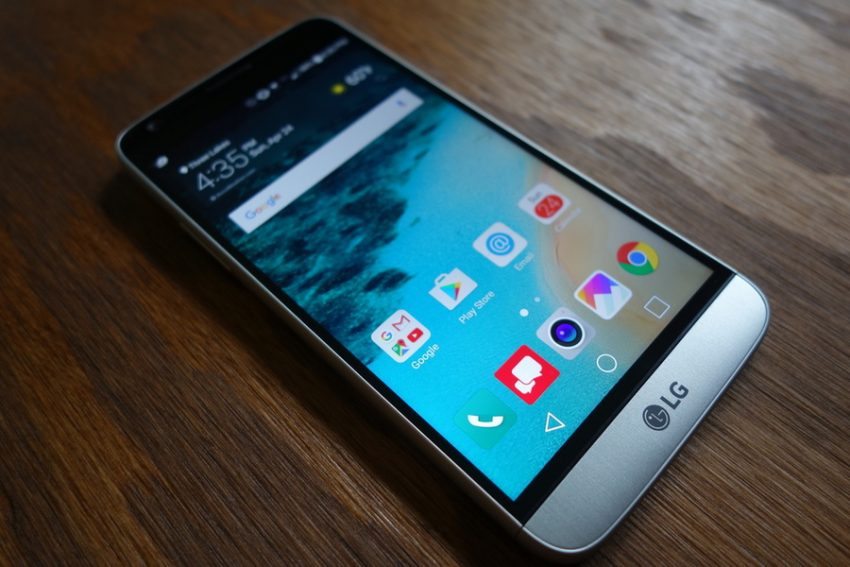
My biggest gripe is the brightness. The flagship arena puts up stiff competition these days, so you really need to be on your game. The max brightness on the G5 falls short in my opinion; I’m often left wishing it would go about 25% brighter. It can be a struggle to see the screen outdoors. I have a Galaxy S7 Edge on-hand and its screen wipes the floors with the G5 in this respect.
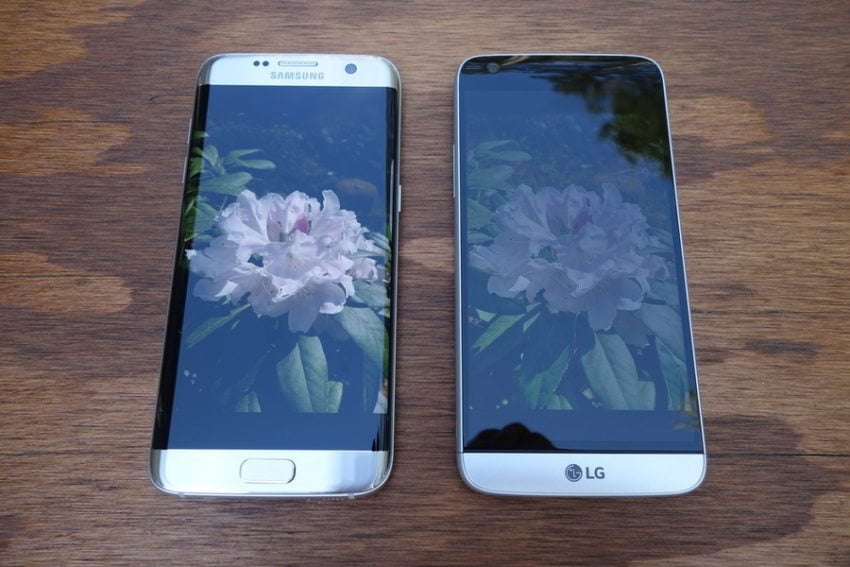
Camera
LG’s magic slot isn’t the only unique feature on the G5. If you haven’t noticed, there’s something interesting on the back – dual cameras.
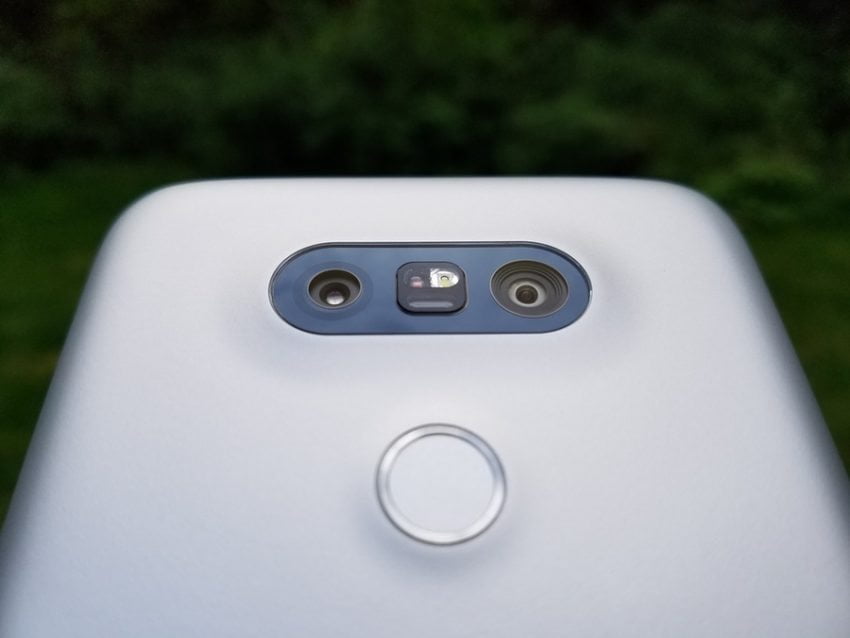
No, 3D recording isn’t making a comeback. The purpose here is to give the user flexibility over the field of view. One of the cameras is at a standard angle and the other is much wider. This does come as an expense to megapixel count, though. The standard module is 16MP while the wide-angle is 8MP.
LG’s cameras are great performers, and can definitely stand up with the flagship competition. Check out the sample shots below.
To my eyes, the reproduction is particularly bright. This is great for low-light situations, but can blow-out spots in the image that are already bright (i.e. sunlight through a window). Depth of field gets captured nicely and adds a nice dramatic touch to closeup shots. The wide-angle capture is superb when the situation really calls for it. It’s incredible how much it can fit in the shot. Alternatively, the standard angle lens can pick up some lovely super sharp detail, thanks to its high MP count.
Battery
LG had to drop the battery’s capacity slightly to execute the new design. We’re looking at a 2,800 mAh battery versus 3,000 mAh on the G4 last year. It’s never good when battery capacity has to drop (battery life one of the most important factors in smartphones), but the G5 manages. Unless you’re a hardcore user, you should get through a day before having to run to an outlet. The battery life does lean dangerously to that borderline, though.
My testing consisted of typical apps, like Chrome, Google Maps, email, Twitter, Pandora, camera, and Feedly, between T-Mobile’s network and WiFi. I was pretty satisfied by LG’s minimal standby drain, this is mainly what kept the phone lasting.
One could justify the smaller battery with the swappability feature, but I imagine that some folks may just prefer a large battery instead.
Software
As expected, we’re looking at the latest version of Android, 6.0.1 (Marshmallow). Albeit, LG likes to throw on top its own custom UI. It’s dubbed “UX” and the G5 brings it up to version 5.0.
Compared to UX 4.0, we have some streamlined aesthetics and simplified functions. I feel like the experience is refined and much more unified than before. For instance, you’ll see the same minimalistic styling in the drop-down notification panel as in the Settings menu.
There are also more fluid animations/transitions throughout; it really makes for a pleasant experience, which rivals stock Android quite nicely. This sentiment is also attributed to the super responsive software. Actions work quickly, smoothly, and without stutter.
LG has toned down some of its features, such as the exclusion of the multi-window function and even the removal of the app drawer (a controversial move that didn’t sit too well with users – LG is said to be adding it back in a software update). But some important ones did come back, like the ability edit the bottom navigation keys or the awesome manual camera controls. A newcomer is the Always-On display feature. It keeps a portion of the display lit when on standby to show you information like the time, date, and notifications.
Final Thoughts
The LG G5 holds its own in today’s tough flagship arena. The hardware doesn’t provide the most refined package, but LG knows how to catch our eye. While premature, that modular capability is a really cool concept, and we hope that other phone makers follow suit. The wide-angle camera is another standout and thoughtful feature. We can’t wait to see where LG goes from here.
